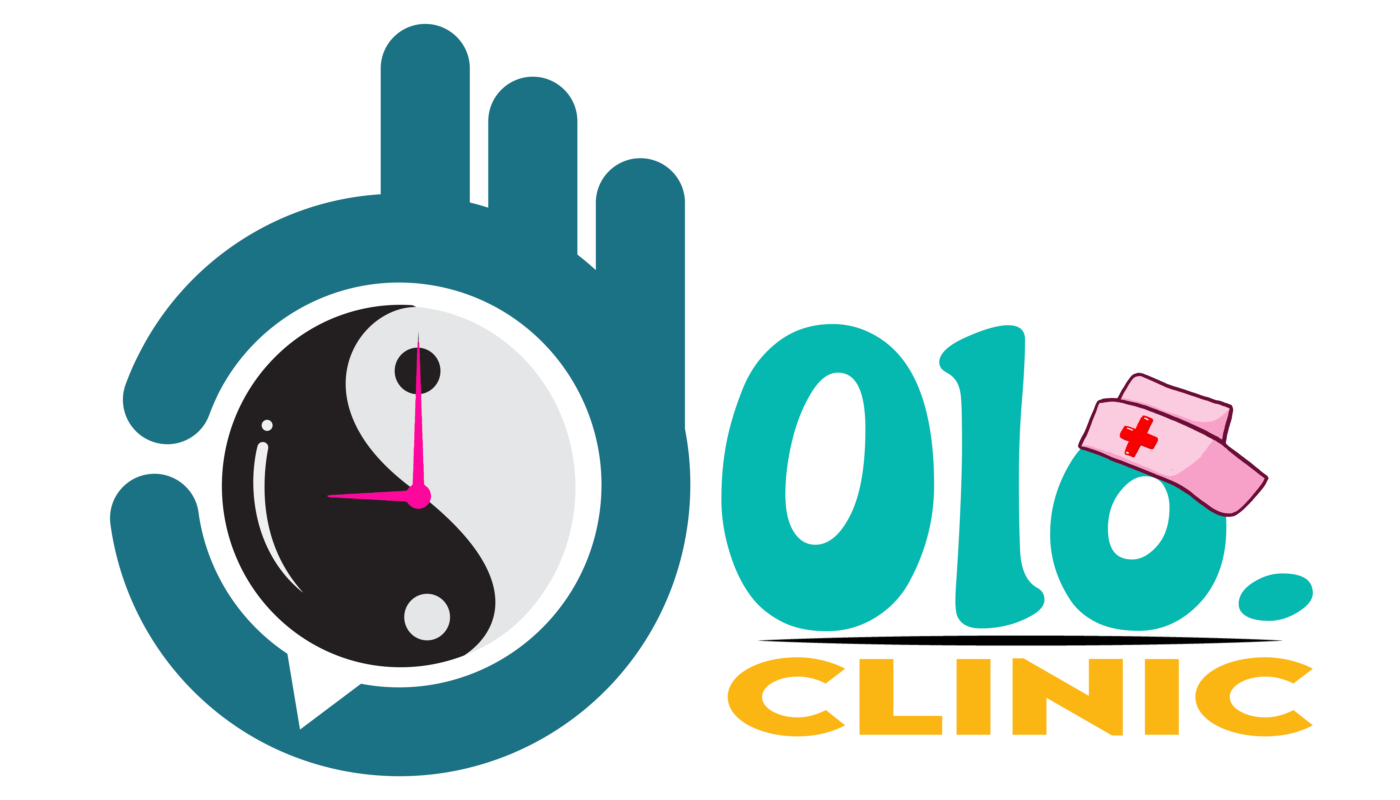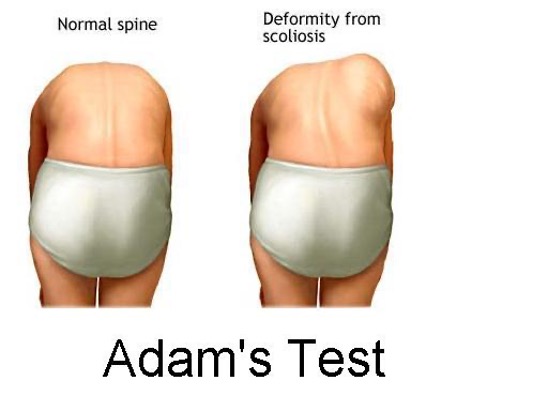What is Adam’s Test?
It is a thoracic spine examination procedure that identifies structural or functional scoliosis. It is also known as the Adam’s forward bend test. It is the most common technique used in school screening for scoliosis.
In this test patient stands as the test is performed. The patient asked to bends forward from the waist until his/ her back becomes a horizontal plane. The feet must be together with arms hanging along the sides and knees extended. The therapist may otherwise ask the patient to touch his/ her toes and remain in the position.
Therapist checks the patient’s back, along the horizontal plane of the column vertebrae, looks for spinal and scapular asymmetry, non-level shoulders and hips or a rib hump. After examining the patient, the therapist assists the patient to return to a standing position.
Test Positioning:
The primary objective of Adam’s Test is to spot any notable discrepancies in the shape of the patient’s back. This test is helpful because some spinal curvatures are more visible in a forward-bent position.
Action:
If any abnormalities are noted, further diagnostic imaging (e.g., X-rays) may be recommended to confirm the presence and extent of scoliosis, followed by appropriate medical or orthopedic interventions.
Positive Finding:
Back Pain, Muscle Fatigue, and Reduced Range of Motion.
Massage Supportive Roles:
General relaxation techniques can help in reducing overall muscle tension and discomfort.
Scoliosis, a condition characterized by an abnormal lateral curvature of the spine, can present with a variety of symptoms. These symptoms may vary depending on the severity of the curvature. Common symptoms of scoliosis include:
Visible Signs:
1. Uneven Shoulders: One shoulder may appear higher than the other, and one shoulder blade may be more prominent.
2. Asymmetrical Waist or Hips: One hip might be raised higher or more pronounced compared to the other.
3. Rib Prominence: When bending forward, one side of the rib cage can appear more elevated than the other, creating a “rib hump,” especially noticeable during the Adam’s forward bend test.
4. Body Leaning to One Side: The entire body may lean to one side, which can be subtle or pronounced depending on the curve’s severity.
Physical Symptoms:
1. Back Pain: Adolescents usually do not experience pain, but adults with scoliosis may report chronic back pain.
2. Muscle Fatigue: Uneven musculature on one side of the spine can lead to muscle fatigue and discomfort.
3. Reduced Range of Motion: Some individuals may experience stiffness and reduced flexibility in the spine, affecting their range of motion.
Severe Cases:
1. Breathing Difficulties: In severe cases where the curvature impinges on lung capacity, individuals might experience shortness of breath.
2. Cardiovascular Problems: Severe spinal curves can sometimes affect the space within the chest cavity, potentially impacting heart function.
Psychological and Social Impact:
1. Self-Esteem Issues: Visible deformities and the requirement to wear braces can affect a person’s self-esteem and social interactions, especially during adolescence.
When to Seek Medical Advice:
– If any of these symptoms are observed, especially in children or adolescents, it’s advisable to seek an evaluation by a healthcare professional.
– Early detection and treatment are crucial for managing scoliosis effectively and can help prevent the condition from worsening.
By recognizing these symptoms and consulting with a healthcare provider, individuals can receive a timely diagnosis and appropriate management plan for scoliosis.
A massage therapist can play a supportive role in managing scoliosis and related muscular imbalances, although it is important to note that massage therapy alone cannot correct the spinal curvature itself. Here are some ways a massage therapist can assist a patient with scoliosis.
1. Pain Relief:
– Trigger Point Therapy: Targeting specific painful points in muscles can help alleviate localized pain.
– Myofascial Release: Techniques to release tight fascia can help reduce pain and improve mobility.
– Swedish Massage: General relaxation techniques can help in reducing overall muscle tension and discomfort.
2. Muscle Balancing:
– Stretching Erector Spinae: Helping to stretch and relax the hyperactive muscles on the convex side of the spine.
– Strengthening Weak Muscles: Providing techniques to help strengthen and balance underactive muscles on the concave side of the curve.
3. Improving Flexibility and Mobility:
– Proprioceptive Neuromuscular Facilitation (PNF): Stretching techniques to improve flexibility.
– Range of Motion Exercises: Working to enhance the patient’s overall mobility, particularly in the spine and surrounding muscles.
4. Enhancing Postural Awareness:
– Educating the Patient: Helping the patient become more aware of their posture and providing tips for maintaining a better alignment during daily activities.
– Guided Exercises and Stretches: Recommending exercises and stretches that the patient can perform at home to support their ongoing care.
5. Stress Reduction:
– Relaxation Techniques: Incorporating breathing exercises and relaxation techniques to reduce overall stress, which can sometimes exacerbate pain.
Steps to Ensure Safety and Effectiveness:
1. Assessment: Conduct a thorough assessment to understand the specifics of the patient’s condition, areas of pain, and any limitations.
2. Communication with Healthcare Providers: Work collaboratively with other healthcare providers, such as orthopedic specialists or physiotherapists, to ensure an integrated approach to the patient’s care.
3. Customized Treatment Plan: Develop a customized massage therapy plan that specifically addresses the patient’s unique needs and conditions.
4. Follow-Up and Adjustments: Regularly assess the patient’s response to treatment and adjust techniques as necessary to ensure continued effectiveness and safety.
Lastly, it’s crucial for the massage therapist to continually educate themselves about scoliosis and stay updated with best practices and new research in the field to provide the best care possible for your patients.

